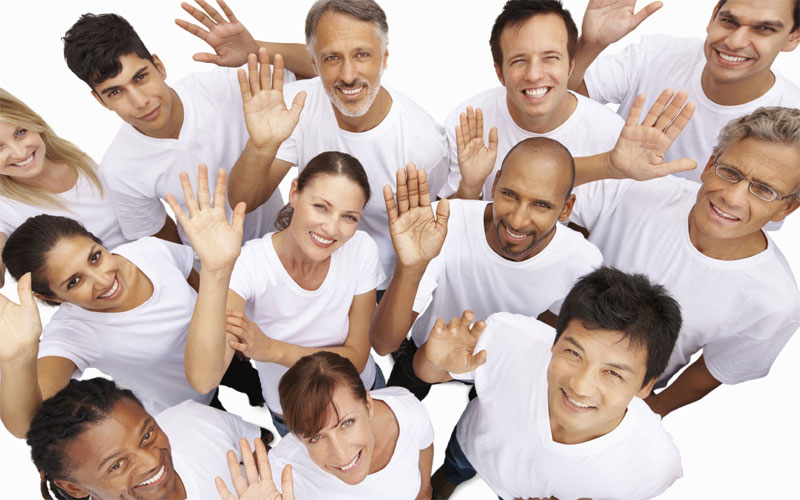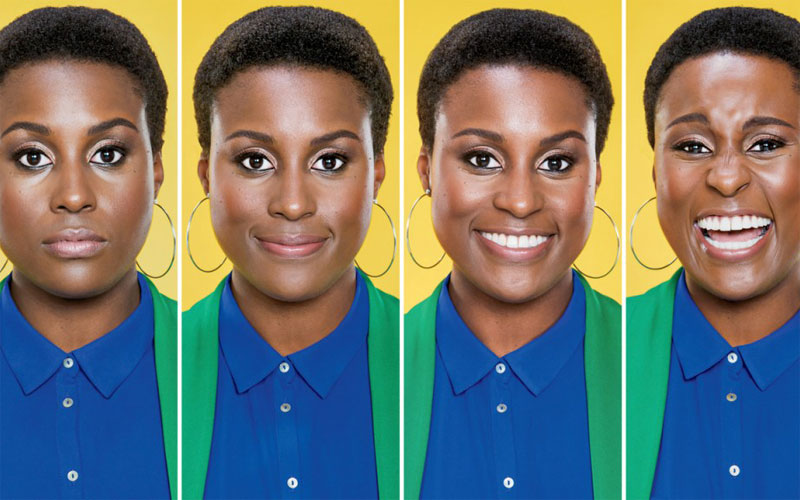23 body language tricks that make you lovable

Body language is a non-verbal communication that we use consciously or unconsciously. This non-verbal communication includes sending and receiving non-verbal signals. It is said that good communication is the foundation of successful relationships. Hence, recognizing and using non-verbal communication or body language is a powerful tool that allows you to convey your true meaning to the other person and make interactions with others an easy and enjoyable experience. This article will teach you about 23 body language tricks that make you lovable.
You send signals to people all day long without even realizing it. These signals show how you move your eyes and shake someone’s hand. By using body language, you may send subconscious alerts that make others like you more or at least assume that what you say is confirmed by receiving those signals. Whenever I talk about these skills, there’s always one or two people who don’t feel comfortable “impressing” others through body language (psycho tricks).
Deception is sometimes wrong.
- “Making an impact” is changing the behaviour or thinking of another.
- “Deception” is knowingly creating an impression.
When you hear the word “cheating,” negative thoughts may immediately come to you, but hold back.
Deception means manipulating the perception and feeling of others; it is okay. What is alarming is the evil intentions of humans.
Example 1: Insidious and deceptive person
A bad person is terrible, and a wrong person who cheats is problematic. For example:
- A naughty girl who wants to lower the social status of her lovely classmate.
- He tells his classmates that this beautiful girl has done something terrible.
- As a result, the whole class will like the beautiful girl less.
- And now the beautiful girl is sad.
Example 2: Friendly deception
Deception can make anyone’s day better in a particular situation.
- A fun person is an experienced deceiver.
- He accidentally punches someone.
- He smiles reassuringly and apologizes, even though it’s not his fault.
- In this way, the fun-loving person avoids a fight with his tact and deception and spends a happy night.
As you can see in these two examples, the problem of the mean girl in Example 1 was not deception and manipulation of the situation. The problem was his evil intentions and lies.
My request: have good intentions
I assume you will use these tricks with good intentions, and please do the same.
First part: Attitude and body language
The human mind always seeks to judge. This characteristic of ours has caused us to survive in the process of evolution. We believe in the blink of an eye:
- Is this person a threat to my life?
- Is this person attractive?
- Is this helpful person for my (social) survival?
Please pay attention to this instinct, but never act on it without knowing the person better. The following tips will help you behave in ways that others will perceive well.
This section is not only about body language; these attitudes will subconsciously affect your body language.
1. Feel safe and confident
This attitude is so important that a whole article should be devoted. You cannot have this attitude 100% of the time. Plus, there are cases where not looking confident gives you the edge of being likable, but the overall mood is genuine.
There are two points to consider in this regard:
– Try to fix the annoying issues:
- For me, lousy skin was an issue that I fixed.
- Another problem was choosing clothes, which I solved by taking one of my friends with me when shopping.
– Teach yourself to feel safe:
- I learned a lot from the self-study audiobooks I downloaded.
- Having a fit body helped me a lot. Read the book ” The 4-Hour Body” or its summary.
2. All are friends unless proven otherwise
Why destroy a bridge before you even build it? It doesn’t seem logical at all:
- You can get everything
- You have nothing to lose
You will soon find out if the new person in your life wants or can be a good friend.
3. Everyone deserves respect unless proven otherwise
Again, by respecting others, you gain something or lose nothing at all. This doesn’t mean that you should be flattering someone all day, but it does mean that you shouldn’t belittle someone or make them feel unimportant.
4. Love everyone unless it is proven that they don’t deserve it
Strangers deserve to be given a chance to prove themselves right. In our world, everyone can be something that is not apparent. I have seen obnoxious people who seemed kind on the surface and billionaires who acted like excited children. As an old saying goes: “Look at a book by its cover, but read a few pages before you judge.”
An obnoxious person or a billionaire is neither “better” than the other. But being next to one makes me sad, and being next to the other makes me feel pleasure and passion.
5. Always think about what you can do for others
When you meet someone, don’t think, “What can he do for me?” but think, “What can I do for him?” Helping others is the best way to get them to help you, and it’s a win-win situation.
I’m not saying give bad advice to make yourself look smart. Only help people if you genuinely believe their lives will be improved by the knowledge, help, or contact you offer them.
Offer to help, but don’t insist. Be brief and helpful, and let them decide whether to accept your help offer.
Second part: body posture
Your body is constantly sending signals to the people you interact with. Body posture affects people’s hasty judgments about you and your perception of yourself. Plus, good posture suits your back, so what’s better than that?
1. Stand straight but comfortable
To find a positive posture, follow these steps:
- Stand with your feet hip-width apart.
- Raise your height as high as possible; imagine being pulled up from the head.
- Now, keep this feeling of height, but relax your shoulders.
- Don’t keep your neck stiff, and angle your head so that you don’t have to look up or down to look someone of average height in the eyes.
A few recommendations:
- Be as comfortable as possible while maintaining posture.
- Don’t get wind of your chest. The chest should be flat, just like lying on the floor.
- Pull your shoulders back a little.
2.Sit up straight, but not dry
When you start sitting up straight, you will find that most people get smaller by not sitting up straight. Sitting at the desk with this straight posture instantly makes you feel taller. Keep your back straight but as comfortable as possible.
3. Always have a little stretch in your midsection
Your abdominal, back and core muscles should never be relaxed while standing or sitting. Put your abdominal muscles and the center of your body under pressure. This has a good effect on your posture and makes it easy for you to walk with dignity.
4. Separate your feet hip-width apart
The way your feet are positioned reveals a lot about you. It’s not an exact science, but usually, feet close together indicate insecurity, while feet far apart indicate confidence.
Being too close and too far apart can reflect poorly on you. Try to keep your feet hip-width apart or slightly wider, not more.
The third part: Entering a room
The moment you walk into a room, you expose yourself to the judgment of the people in the room. Be sure to take advantage of this opportunity.
Some people may recommend extreme techniques such as snoring, but this advice only works in some situations.
1. Smile in such a way that you are happy to be in that group
Smile when you enter a room, regardless of whether you’re happy. Smile as if you really enjoy what you see. Please do not overdo it. Do not laugh out loud. Your Smile should be as if you stepped outside after a few rainy days and noticed the beautiful shine of the sun.
2. Greet the attendees
Do not greet only one particular person. Be quiet and greet individual people only if that’s their preferred behaviour. Otherwise, stand still for a moment or stroll while looking at the people in the room.
- Make eye contact
Don’t look at the crowd in the room as quickly as if you were looking at objects. Look people in the eye and smile if someone looks at you. Make others feel like a positive person has entered the room.
- Be patient
This not only shows your self-confidence but also an open and receptive attitude.
3. Wave to (imaginary) friends
Humans innately like or respect people who have many friends. When you walk into a room and do the usual “hello” routine, follow up with a wave to your friends and say something like, “I’ll see you now!”
The thing is, you shouldn’t stress about waving to imaginary friends. I always do this on big occasions. Remember that one cannot see behind one’s head. If you wave to a non-existent person who is supposed to be behind the person in front of you, the person in front of you will not know that you actually waved for air.
This has interesting results:
- People assume you know the people present
- You have more time to look around calmly
- You feel more confident
The point here is not to shake your hand with fear. Do this with complete confidence. Wave as if your best friend is across the room, and you’re trying to tell them you’re contacting them immediately.
Part 4: Handshake manners
1. Shake hands firmly but gently
Men are susceptible to handshakes. A weak or “dead fish” handshake instantly lowers your likability rating.
- Just don’t raise your hand. Shaking hands is a team effort.
- The pressure of your writing should be as if you are holding the handle of a heavy frying pan.
- If someone reaches out to you like a “dead fish,” don’t squeeze their hand hard.
2. Make eye contact when shaking hands
Looking around brings a negative charge subconsciously:
- You do not respect or care about the person you shake hands with.
- You have something to hide.
Look into the other person’s eyes long enough to remember their eye colour. Do not stare and look into his eyes for a moment.
3. Smile as if seeing them has made your day
When looking into the eyes of the person you are shaking hands with, smile as if you see something in their eyes that makes you happy.
Don’t laugh out loud, and smile.
The fifth part is body positioning.
How and where you determine the position of your body affects how others perceive you. Body positioning, along with posture, are powerful tools.
1. Be open-minded
When you talk to someone, show your body position so that the person is open and receptive. In other words, your body position should preferably be “exposed”; for example, don’t cover your chest with your hands and don’t hunch over. By following these tips, you show your trust and comfort to the other person.
2. Adjust the angle of your body towards the person you are talking to
It’s a subtle change, but ensuring your body is “signalling” to your partner is essential. If the angle of your body is away from the other person, it indicates fear, insecurity and suspicion.
3. Do not rely on objects
Leaning on an object (for example, a wall) indicates indifference and possibly a sense of insecurity. Stand with good posture whenever possible. Using the tips from the body posture section, try to adopt a “neutral body posture” and, of course, a comfortable one.
4. Don’t forget your posture when you lean on something
If you must lean on something for any reason, maintain good posture. Do not slouch.
The sixth part: face
Your face is an area with many signals. In fact, much research has been done on facial micro-movements that people show unconsciously. Humans transmit a lot of information in this way without knowing it. You can tell people a lot about yourself by using your face.
1. Put on a happy face
Have you ever heard of “Cold Face Syndrome”? Some people claim that their calm face looks upset or angry, making others perceive them as a social risk. You will naturally not want to talk to someone with this facial expression. However, this state is not a threat to others, except for one’s social relationships.
Be sure to make your regular face (for example, when you work with a laptop) look comfortable, if not happy. An easy trick is to pretend you’ve found something fun.
2. Do not break eye contact suddenly
People have a habit of looking away if they make eye contact with someone. Try not to do this. Maintain eye contact and Smile. People often look away on their own, although some won’t take their eyes off you.
Eye contact has several benefits:
- People consider you to be innocent.
- You will feel more confident.
Please note that when you respond to someone’s eye contact with your own, be sure to smile. An indifferent look can be very unpleasant.
3. smile
There’s an easy trick to smiling: imagine you’re watching something you really like.
Smiling does not mean moving the parts of the face in a certain way, but it means feeling happiness and letting the face express it.
Part Seven: Techniques and Habits
Here, we will discuss some tips that require you to use your conversational and communication skills.
1. Compare the actions of the other party
A powerful and well-researched technique mirrors, as if you are reproducing the other person and imitating their actions. People feel more comfortable around and like you when you act like them. For example:
- Are they hand to chest? Keep your hands to your wardrobe.
- Did they lean on their right foot? Lean on your right leg.
- Are they holding a glass of water? Take a glass of water in your hand.
The point here is that you should not be exposed. When the person notices your mimicking behaviour, this technique loses its power.
2. Similar movements
As in the case above, you should not be exposed here. Sometimes, the subtleties make a significant impact:
- You are drinking coffee with him. Does he pick up the cup to drink coffee? Do this, too.
- Is he smiling? Smile, too (it’s easy).
- He gets a little closer to you. Do this, too.
I repeat once again that do not expose and do not behave artificially. It would help if you used this technique regularly and without drawing attention.














One Comment